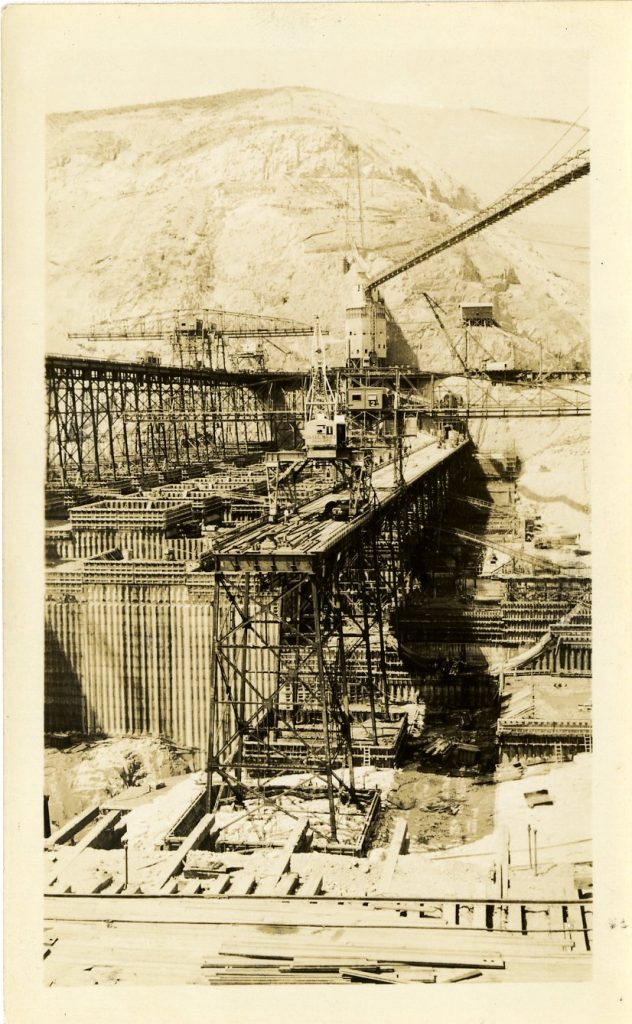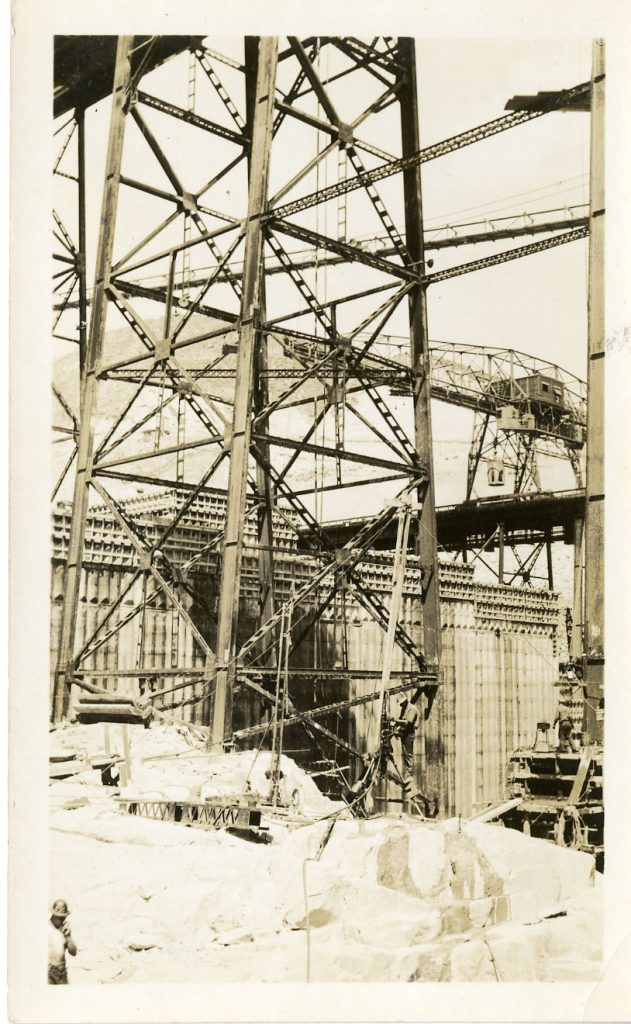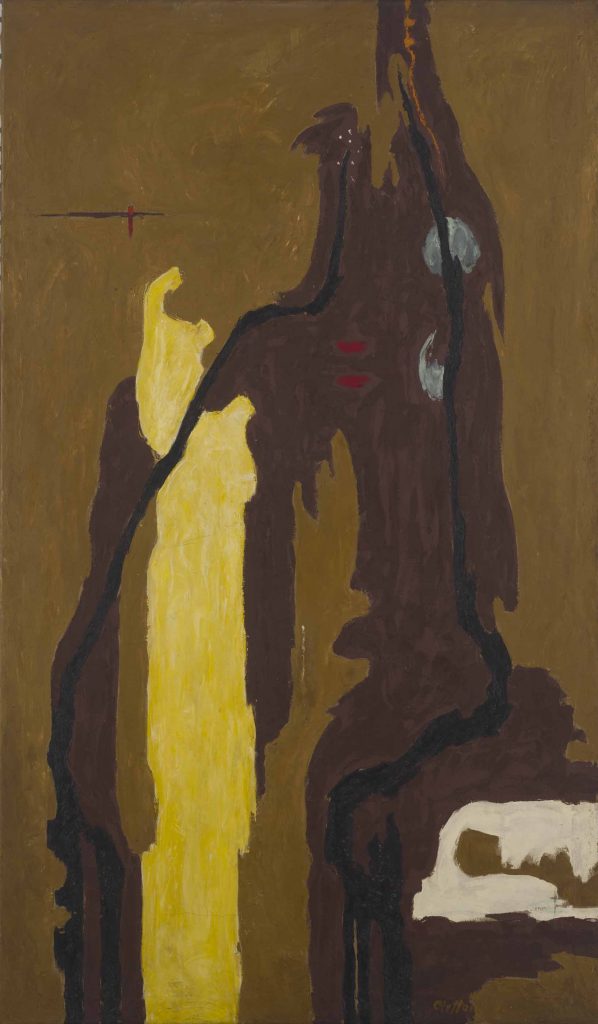By Kimberly Roberts, Junior Research Fellow, Clyfford Still Museum Research Center
The Clyfford Still Museum collection and archive contain approximately 23,000 photographic images (prints, slides, negatives) spanning the artist’s life (1904-1980). Some were taken by Still’s youngest daughter Sandra or his second wife Patricia and others by Clyfford himself. The collection includes portraits, photos of family life, farm life, the city, landscape, gallery installations and images of artwork. I have spent the past few months researching photographs taken by Still that I believe demonstrate his interest in photography as an artistic medium. In the process, I have considered the nature of these images and others in the collection, how they relate to Still’s body of work as a whole and to the man himself. To share a peek at some of my findings, I am spotlighting a series of photographs Clyfford Still created at the Grand Coulee Dam construction site in 1936. This was a point in time that coincided with his move towards abstraction in painting and his emerging consideration of the artistic possibilities of the photographic medium.

Clyfford Still spent 1933-41 at Washington State College [now Washington State University]; he earned his MFA in 1935 and continued on as a faculty member in the art department for the next six years. During the summers of 1934 and 1935 Still was a fellow at the Trask Foundation—an artists’ retreat better known as Yaddo—in Saratoga Springs, NY. It was there, free of any other obligation, that he made an artistic breakthrough. Still recalls, “[f]rom then on I began developing my work as an instrument of thought—to extend it—to attain something greater than mere recording of the environment.”[1] The paintings he created during this time begin to abstract form and figure, moving away from representation and towards expression.
With this shifting perspective in mind, let’s consider the series of photographs made the following summer. In 1936, Still visited the construction site of the Grand Coulee Dam on the Columbia River northwest of Pullman and while there he created at least 10 photographs, a few sketches and two paintings. [2] The photographs are of particular interest because, within the small series, Still appears to emphasize both the documentary abilities and expressionistic possibilities of the camera. Here he blends representation and abstraction. Half of the images are horizontally oriented and are broader in scope, showing the relationship of the construction site to the surrounding landscape. The remaining half, clearly taken from within the worksite, are vertically oriented, cropped in more tightly, and thoughtfully composed to highlight form, line and texture.

We can view these vertical photographs in a couple different ways. Firstly, they are literally a glimpse through the eyes of Clyfford Still as he experienced the site. In his field notes, Still expresses his experience in words which echo the photographs: “Then we drove down to the dam…The size of the ‘structure’ cannot be appreciated as yet, nor the work involved. For after all the great cliffs on either side, the river itself, dominate everything else. The work goes on so smoothly and quietly that it is hard to realize that building is in progress. Men seem almost immovable specks—the cranes move slowly, the river drifts around the cofferdam, a distant hum of motors blend with the splash of the water…Energy, calculation, size, skill, and knowledge they have and require but they are little more than magnified toys nevertheless, and pride in them certainly compared to a boys delight in the first machine he made.” [3]
Considering what Still has written, the photographs could also be viewed as an expression of man’s relationship to machine, labor or nature in a quickly changing modern landscape. In these images, the dam construction is severely imposing upon the landscape but despite the activity the mountainous banks of the river rise above all in the background of the photographs. On the contrary, man who is in control of the operation is dwarfed by both his creation and nature.


Additionally, the photographs relate to Still’s body of work as a whole in that they begin to demonstrate themes/motifs prevalent in his painting. [4] The camera is an extension of the eye; the vision through which he viewed the world and created was inevitably translated through this instrument and into the photograph. Through this lens, another layer of meaning may be revealed. In choosing what to exclude and how to frame what he includes, Still abstracted the environment, transforming the construction site into images that allow viewers to forget the subject and appreciate the form first. The orientation of the photographs emphasizes the vertical forms and lines that dominate the compositions. The worms-eye view vantage point looks upward at the massive structures exaggerating their height and grandeur. Still explains the “ascending verticality” and “aspirational thrust” of his canvases throughout his career as taking root in his early landscape painting which he described as “records of air and light, yet always inevitably with the rising forms or the vertical necessity of life dominating the horizon… And so was born and became intrinsic this elemental characteristic on my life and my work.” [5] That character is easily seen in these photographs.
During his time at Washington State College Still taught drawing, art history, painting, design. His design courses focused on concepts and principles that could be utilized in any medium, essentially teaching students how to see and think aesthetically. From 1937-38 Still served as faculty advisor to the student Camera Club with specific emphasis on issues of composition in photography. [6] The images of the Grand Coulee Dam and his role in the camera club clearly indicate that at this time Still was consciously thinking about the aesthetics of photography and exploring his artistic vision in the medium.
These photographs certainly document a significant moment in history but are presented through the unique eye of an artist who continually reflected upon and explored the possibilities of his expression. While painting would forever be Clyfford Still’s medium of choice, these photographs begin to reveal another aspect of the artist and demonstrate his interest in form, line and texture skillfully realized through the camera.
###
[1] Patricia Still’s diaries dated Aug., 8, 1968. Clyfford Still Museum Archives.
[2] In 1936, fellow art faculty member at Washington State Collge, Worth Griffin invited Still to join him on a preliminary research trip for what would become the site location of the Nespelem summer art colony. Still taught summer sessions there in 1937 and 1938.
[3] Clyfford Still’s handwritten field notes from first trip to Nespelem, 1936. Clyfford Still Museum Archives. Grand Coulee Dam construction was begun in 1933 and completed in 1941.
[4] In the 1940s Still also experiments in printmaking and sculpture.
[5] Statement for Painting 1960-R. Clyfford Still’s Diary Notes and Selected Letters, 1960-69. Clyfford Still Museum Archives.
[6] Campus newspaper, The Evergreen, Nov. 10, 1937.
